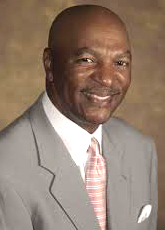Blog: June 2014–
by Pete McDaniel
It’s men’s national championship week and for the first time in recent memory I’m teetering between apathy and modest interest, which is a sad state of affairs for someone who has reaped so many rewards from a lifelong love affair with the game of golf.
I should be filled with excitement and pride seeing that the U.S. Open is being contested in my home state—a third such distinct honor for Pinehurst in the past 15 years and an amazing feat in light of the blue blazers’ historical reluctance to stage their most prestigious event in a grits-and-gravy state. In fact, of the previous 113 (it wasn’t contested from 1942-45 because of WWII) U.S. Opens, only 13 of them were held in the South.
With notoriously unlucky 13 removed from the equation this week, all lingering fears (if I had any) of a calamitous occurrence during the competition should be alleviated. I’m talking inexplicable madness like someone having a Dustin Johnson moment from one of the numerous waste (sand and grass) areas re-incorporated in the course by the Ben Crenshaw-Bill Coore restoration of the Donald Ross design.
Since my 13 grandchildren have made that my new lucky number, I don’t believe superstition has anything to do with my indifference.
More likely the reason for my cavalier attitude is the absence of Tiger Woods or any other person of color from the field—a harsh reminder of the uphill climb still facing most minorities as we attempt to gain a foothold in professional golf.
I just can’t get fired up for the status quo.
A month ago we celebrated the opening of a permanent exhibit honoring African American golfers and our rich history. Now it appears we’re hard pressed to find anyone with enough talent and drive to make their own footprints in the sands of history.
A pint-sized power hitter from Atlanta just might disagree. Her name is Mariah Stackhouse.Remember it, for in the not-too-distant future this charismatic, little dynamo could have a similar impact on the women’s game among young girls of color as Tiger has had on their male counterparts. Huge.
As the first African American member of the Curtis Cup team—she was 2-0-2 as the Americans handily defeated the Europeans, 13-7, this past weekend–Stackhouse is already making her mark on the game. Before that the sophomore at Stanford University wrote her name in the NCAA record books by shooting a 61 in a tournament her first year as a Cardinal.
I first met Mariah at LaJean Gould’s event for historically black college and university (HBCU) women’s teams several years ago. Gould is the president and founder of the Women In Golf Foundation. The event was held at Sugar Creek Golf Course in Atlanta and Mariah, an adolescent at the time, gave an exhibition under the watchful eye of her father, Ken.
Even then she wowed the crowd of onlookers with her shot-making. A few years later, at the tender age of 14, Mariah won the 2008 Georgia State Women’s Amateur Championship, becoming the event’s youngest winner. Her stature grew nationally with a victory in the Bill Dickey Invitational, which pits the country’s highest rated minority junior golfers against one another.
For sure, Mariah is on the move.
So are a number of African American men, as witnessed by yours truly at an Advocates Pro Tour event in Newnan, Ga., this past weekend. Granted their rise isn’t as dramatic or meteoric as that of Stackhouse, but, as one of my contemporaries was fond of saying, “Slow motion is better than no motion.’’
Former Bethune-Cookman University standoutWillie Mack III, of Flint, Mich., shot a preferred-lie-aided, final round 66 at Summer Grove GC for a two-day total of nine-under 134 and a three-stroke victory over journeyman George Bradford. Former Ohio State University standout Kevin Hall finished another shot back at 138.
It’s one of my favorite events of the season because I get to see the future and the past (Jim Dent competes as do old warhorses and friends of mine Johnny and Jesse Allen; the latter shot two-under to win the senior division and place among the youngsters in a double dipper, as well) fiercely competing.
Other nationally-known players like Vincent Johnson (the first recipient of the Charlie Sifford exemption into the Northern Trust Open) are in the field. And some lesser-knowns like Montrele Wells of Jacksonville, Florida by way of Columbia, S.C. give the event weight, too. Wells played at Benedict College in Columbia. A stylish dresser with a pretty nice game, Wells could be the poster child of the Advocates tour. Plenty of potential but little financial backing.
My fear is that unless there is a return in this country to a mindset of affirmative action and moving the needle toward true diversity, that potential will remain in a bottle.
On the women’s side, more and more African Americans are claiming opportunities to showcase their potential. Three of them—Cheyenne Woods (Tiger’s niece), Sadena Parks and Sierra Sims—qualified for the U.S. Women’s Open next week, also at Pinehurst.
Having a trio of African American women in the field may or may not be historic. One thing’s for sure, my apathy will have taken a dramatic shift toward all-out exuberance come June 19 when the curtain again rises on storied Pinehurst No. 2.
Can someone say “I’m all in.’’
* * * *
Pete McDaniel is a contributing editor for the African American Golfer’s Digest, a veteran golf writer and best-selling author. His blogs and books are available at petemcdaniel.com
Comments on this topic may be emailed directly to Pete at: gdmcd@aol.com


